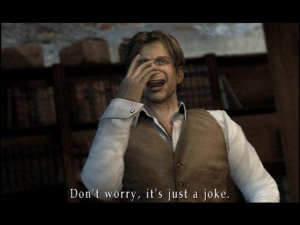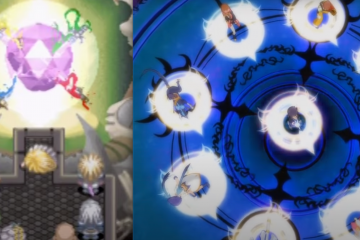
The following is part of Now Loading, a series that renders verdicts on whether or not your favorite video games deserve a place in the canon of works that have contributed to video-game storytelling in landmark ways. Read the series’ full mission statement here.
Happy Birthday to You…
Ladies and gentlemen, girls and the rest, hello and welcome to Now Loading…The Video Game Canon! The only weekly internet column that takes games from the past and decides whether or not they should be remembered in the future.
So here’s the deal, Dear Reader: I have in something of a slump lately. Whether it’s due to the fact that I’ve been laid up the past few days with some strange illness, or because I’ve been pouring my heart and soul into Silent Hill, one of gaming’s most emotionally draining franchises, for this past month, I can’t quite say. What I can say, however, is that I have written this introductory paragraph over and over again in nearly a dozen different kitschy styles to welcome you to the spooky world of this week’s game, but it’s just not happening.
With each new approach at this little opening bit, I felt progressively more “blah” about what I had written. But why is that, Dear Reader? Could it be that I am not the masterful wordsmith I’ve always assumed myself to be? Could it be that my ability to interweave aspects of the game’s narrative into an essay about that game wasn’t quite as brilliant as I thought? After stewing in these thoughts for some time, I came to quite the realization.
My inability to write an interesting opening for this game wasn’t because my incredible mental faculties were failing me: rather, Silent Hill 3 is just kind of bland.
I mean really, guys, I tried quite a bit to come up with a fun little opening skit that could encapsulate the mood of Silent Hill 3 while simultaneously setting up some thoughtful analysis, but the inkwell of my mind has gone dry. Even as I sit here typing this bold-faced admission of botched creativity on my part, I struggle to explain why it is so difficult for me to relate my thoughts on this game.
It’s not that Silent Hill 3 is a bad game. Hell, it’s not even that I have absolutely nothing to say about the game. I think what it all boils down to, in the end, is that Silent Hill 3 is a completely botched premise, and that’s not exactly a topic about which I take joy in writing.
Imagine, if you will, you are a member of Team Silent who has been called to a meeting with the Konami higher-ups.

“That’s ‘Doctor Stange-nami’, to you.”
You and your creepy friends are all nervously tittering about the purpose of this gathering. “Could it be about the massive and unparalleled success of Silent Hill 2?” one of your creepier friends wonders. “Yes,” someone agrees: “perhaps Konami will be hiring Office Ladies dressed in Sailor Moon outfits to acquiesce to your every whim as reward for your good work.” That guy is your creepiest friend, you’ve decided.
Before you can inch your chair any further away from him, a fog descends over the room, a chill runs through the air, and a man screams as the doors burst open. Lord Konami has entered the conference room.
“Gentlemen!” bellows Lord Konami as he brandishes his whip. “Congratulations are in order for your endeavors.”
Nervously, you look around the room and notice that one of your bolder teammates has begun something of a slow clap. You watch as the rest of the team nervously looks to Lord Konami, and he nods his maliciously silent approval. The sound of clapping swells, and timid laughter erupts from your creepy friends. Lord Konami abruptly raises his hand, and a deadly pall falls over the room.
“Let us discuss the direction of the Silent Hill franchise.” He tucks his cape beneath him as he sits on his throne of skulls. “Naturally, you have been greenlit for a third installment, and, as I am a generous God, I shall bestow upon you COMPLETE CREATIVE CONTROL.”
The nervous tittering begins anew, when it is cut brutally short by his striking of the lambskin gong with the ceremonial Spine Scepter. Seeing the scepter, your thoughts drift to ol’ Jellyback Joji.
“You know how I hate nervous tittering,” Lord Konami says, returning the Scepter to the Altar of Ga’al. “Now then, what do we think?”
Your head has been brimming with ideas since the warm reception of Silent Hill 2, and so you raise a shaking hand to express your thoughts on where the series should go. Lord Konami’s head snaps in your direction, and you take his bloodcurdling gaze to mean that he is willing to hear you speak.
“Well, sir, I do have one idea about how to move forward with Silent Hill. The second game was widely lauded as a masterpiece, and it had barely anything at all to do with the first game. The only thing that really carried over from the first game over to the second was the town itself, and the idea of this purgatorial space that reveals itself differently to everyone who sees it. It’s a good move for a number of reasons, not least importantly being that it takes the silly cult idea from the first game and retroactively makes it a symptom of the town’s supernatural weirdness, and not the cause of it.”
At the mention of the word “symptom,” you see a cold grimace flutter over Lord Konami’s face, as if he is remembering something horrible he has planned for later.
You continue.
“So, sir, by making the second game about one man’s internal struggle manifested in this horrific town, we lay the groundwork for a type of anthological series moving forward, in which we can tell any story we want! Instead of being confined to the world of the first game, like so many long-running video game series are, we can ditch the satanic cult idea entirely and just make the games about different people experiencing different versions of hell in this creepy New England town. The possibilities are endless, sir! So long as the town of Silent Hill is an amorphous, vague backdrop, we can branch out in as many different directions as we can imagine.”
You hear your colleagues murmur in agreement after your pitch is over, and that gives you hope. Lord Konami considers what you had to offer, and then considers you. He begins to do that thing where he sizes you up by looking inward towards your soul, and you squirm a bit as he does so. That horrible grin creeps back upon his face, and he finally speaks.
“What I’m hearing,” he begins, “Is that you think going back to the Satanic Cult from the first game would be a poor decision?”
“Yes, sir.”
“What I’m hearing,” he continues, “Is that it would bring you great displeasure to be confined to the world of the first game like that?”
“Yes, sir.”
“Very well,” he says, and for a glimmering moment you think maybe you have just pitched the greatest series ever.
But he is Lord Konami, after all, and he relishes in your discomfort and pain.
“I decree, therefore, that Silent Hill 3 will be a direct sequel to the first game, and that the entire story shall revolve around that silly cult!”
“But sir—!”
“So it is said, so it is written! The Pact is signed!”
You try to argue, but it is done. Lord Konami has phased back to his own twisted plane, and you and the rest of Team Silent are tasked with eschewing the greatest idea ever in favor of further exploring the weirdest part of the first game.
Oh, look at that: I did have a sketch in me, after all.
Now, listen, Dear Reader: I doubt the pitch or development of this game was anything like the story I just concocted, but I will stand by the assertion that the decision to go back to the story of the first game was a mistake from which the series never fully recovered. Going back to the Cult and characters from the first game crippled the series by limiting it to the confines of that one story, and Team Silent committed the cardinal sin of horror by explaining the spooky origin of the town. And even though Silent Hill 3 is by no means a bad game, the fact that they resorted to going back to the well so early in the series, especially after the brilliant departure that was Silent Hill 2, was quite the misstep.
With that in mind, let’s take a look at Silent Hill 3.
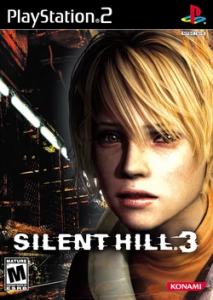
Story and Characters: I Found that Little Girl
If I haven’t belabored this point enough, the story of Silent Hill 3 isn’t bad: it’s just misguided. To nutshell it for you, you play as a teenage girl named Heather, who, you quickly find out, is the reincarnation of Alessa/Cheryl from the first game. Harry Mason, being the upstanding adoptive father that he is, took the reincarnated child from the hellish town of Silent Hill and move her as far away from the town and its wacky, demon-worshipping cult as possible.
But, wouldn’t you know it, The Cult—now also known as “The Order”—wasn’t too keen on Harry killing their Demonic Hate God and then stealing the reincarnation of the living vessel that birthed said God into the world. So, Harry and his daughter have been moving from town to town, dodging Cultist after creepy Cultist for seventeen years.
During one such creep dodge, Harry actually killed one of the Cultists to protect Heather, which only served to splash more gas on the hatefire burning in the Cult’s belly. In a threefold effort to exact revenge on Harry, Claudia Wolf, the high priestess of The Order, hires private detective Douglas Cartland to track down Heather and Harry, and to bring Heather to Silent Hill at all costs.
We begin the story proper with Heather running errands for her father at the local shopping center. After a long day of running around a mall, Heather gets tired and falls asleep in a local fast-food restaurant, whereupon she dreams about Silent Hill. She can’t remember ever visiting that place, and yet the dilapidated amusement park in which she finds herself feels eerily familiar, as if she had somehow been there long ago. Before she can reminisce any further, she is run over by a roller coaster and jolts awake. Upon waking up, she realizes she is in a different part of the mall, and is greeted by Douglas.
When she encounters the private dick for the first time, she is flippant and standoffish, as any teenage girl might be to a strange man dressed like Columbo who’s offering vague insight into her creepy past. So, she ditches him and tries to get back home to her father. Unfortunately for Heather, Silent Hill is reaching out to her, trying to draw her back to where her destiny lies. The town does so by engulfing her in the hellish Otherworld environment, twisting the mall into a rusty, blood-covered nightmare-scape, populated solely by twisted monsters and disturbing stuffed-rabbit toys. This time, however, it is no dream, and she fights her way through until finally managing to find an exit back to the real world.
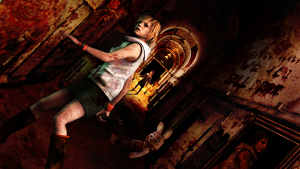
After her Otherworldly escapade, Heather makes her way back home, only to be met with a grisly discovery: her father, Harry Mason, is dead.
Yes, Harry Mason, the lovable, everyman protagonist from the first game, was killed offscreen by a Cultist of The Order.
Eventually, Heather meets up with Douglas, who feels terrible after realizing that he was essentially paid to lure Heather out of her home so that her father could be killed. Consumed with hatred and a lust for revenge, Heather vows to return to Silent Hill and kill whoever did this to her father. Douglas tries to convince her that revenge won’t solve anything, but she is resolute in her decision to return to the town that has been calling to her since the day she was born. Not wanting Heather to go alone, Douglas agrees to drive her into the town.
Now, at this point, Dear Reader, I am going to skip to the end of the story, because Silent Hill 3 is far more driven by the characters than by the plot. Heather eventually learns that she is the reincarnation of Alessa, and that the cycle of hatred that allows the demonic God to be birthed into our plane of existence also keeps her alive perpetually. The only way to break the cycle is for Heather to return to Silent Hill and birth the demon God. If she tries to stay away from the town, misery after misery will befall her, making her feel more and more hatred and anger until she finally incubates enough vitriol to drive her back to the town and let loose Silent Hill’s Hate God onto the world. Realizing this, Heather gives into the cycle and allows for the Hate God to be born through her. However, desperate to end the cycle of suffering that ruined Alessa’s life and has now brought about the death of Heather’s father, she swallows some of the same potion that Harry used to kill the God seventeen years earlier. By imbibing this potion while incubating the Demon God within her, she vomits up the fetal deity and kills it once again.
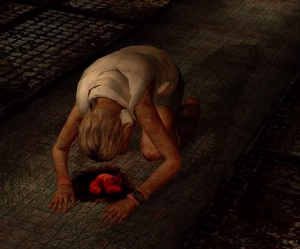
Whether or not Heather’s actions have broken the cycle of hatred and suffering that permeates the town is left to the player’s imagination, and we can only be hope that, through her actions, Heather truly managed to put an end to The Order’s attempts to birth a horrid god into the world.
Before we delve into the characters, it is important to note that Silent Hill 3 perfectly echoes the themes of the first Silent Hill. If you remember in my article on the first game, we discussed the cycle of abuse that completely runs the town of Silent Hill. It was the abuse of Alessa that led to the birth of the God in the first place, and it was the continued existence of The Order and their desperation to bring the God into this world that killed Harry Mason and lured Heather back to the town.
In this way, the story beats and plot points that repeat in Silent Hill 3 work to emphasize the themes of abuse that were present in the first game. Abuse and violence are cyclical, and when a community is built around covering up horrid acts and turning a blind eye to horrible things in the name of the Greater Good, innocent people suffer for it. In a somewhat demoralizing turn of events, we learn in Silent Hill 3 that Alessa wasn’t even allowed to rest after the events of the first game. Even though Harry effectively saved her, she is irrevocably linked to the evil deity of Silent Hill, and so, whenever The Order attempts to summon it, she relives her suffering again and again. The vagueness of the ending to Silent Hill 3 leaves us with little hope, and implies that, so long as Silent Hill exists, so, too, will this horrific cycle of abuse.
True to Silent Hill tradition, we see these themes play out in the characters we meet throughout the game. And yet, contrary to the first game, where essentially every character could be classified as an abuser, this game instead presents us with characters who have all been victims of this cycle for their entire lives.
Let’s begin with Heather Mason, who has unwittingly been a pawn in The Order’s game since Harry absconded with her from the town seventeen years ago. Heather is a strong-willed, sassy protagonist, who, despite being motivated solely by her desire for vengeance, is an incredibly emotionally intelligent and empathetic person. Although she is prickly towards Douglas Cartland in the beginning of the game, she grows closer to him and treats him as something of a surrogate father after the loss of her own. Heather has been an unwitting victim in the Order’s scheming since the moment she was born, and it is only once her father is brutally murdered that she realizes she has these unbreakable ties to a town steeped in violence and abuse.
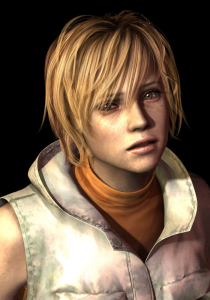
Douglas Cartland, private detective, is a man on the edge of breaking down. After he failed to make enough money to support his family, his wife divorced him and then later committed suicide after their son was killed while robbing a bank in an effort to save the family financially. Douglas naturally blames himself for the death of both his wife and son: as the game goes on, he makes it clear that he doesn’t think he deserves forgiveness.
What’s doubly tragic about Douglas is that, unlike other Silent Hill protagonists, the problems in his life were not self-inflicted. His inability to provide for his family was simple bad luck, which was only made worse for him when he lost his family twice: once to divorce, and again to death. Douglas’ sin, then, is not the misfortune that befell him and his family, but rather his self-implication into the world of Silent Hill. He agreed to take the job from the Order to save himself financially, but he damned Harry and Heather Mason in the process. In this way, he became the unwitting enabler who brought the abuse to its ultimate victims.
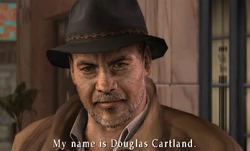
Then we have Claudia Wolf: the high priestess of the Order; the woman who paid Douglas to bring Heather back to Silent Hill. Claudia was the daughter of the high priest of the Order, a maniacal zealot who believed that sadistic torture was the only way to raise a child, and whose unbreakable devotion to the town’s god instilled in young Claudia the belief that all life was suffering, and that the only escape was to be killed by god. This was only compounded by the fact that her best friend, Alessa Gillespie, was chosen to be the vessel for god, and was to be kept eternally tortured so that all believers could be saved by god’s horrid grace.
Claudia, unlike Dahlia, was doomed from the very start. Whereas Dahlia could have, at any point, decided to treat her daughter like a human being, Claudia was instead raised to believe that people are just tools to be used in order to increase the suffering of the world. She was indoctrinated and physically, mentally, and perhaps sexually abused by her father, such that her entire life was engulfed in a pain only rivaled by Alessa’s. As such, Claudia Wolf is the classic case of an abused-person-turned-horrid-abuser, whose sole goal is to keep the cycle going.
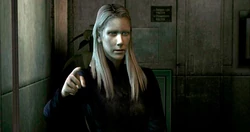
Lastly, we have Vincent Smith. Let me make something perfectly clear: Vincent is not a victim. Vincent is, perhaps, the only character in Silent Hill 3 who is so sadistic, so conniving, and so psychotic that he can do nothing but perpetuate the cycle in the worst way possible. He is, effectively, the one spinning the wheel in the first place. Vincent is a smarmy, weaselly little man, who occasionally pops up in the game to goad Heather into doing things she may regret. He is a high priest of The Order, and holds that position because he is part of a very old, very wealthy family in Silent Hill. He acts as The Order’s financier, tugging on his purse strings as if they were leashes on the other members of the cult. He is interested in Heather not because he necessarily wants her to birth The Order’s god, but rather because her status makes her the most important person to the cultists. With her under his command, he has complete control over Claudia and all the other members, essentially turning him into a god.
Every time the player encounters him, Vincent gives the impression that he knows much more than he lets on, and often drops hints that the town is far more insidious than even we realize. In fact, in one simple exchange, he flips the entire series on its head, making the player wonder just what the hell she’s been doing this whole time…
But I’ll get to that.
Vincent Smith comes across as the most evil character that the game has to offer because he seems to have the most to gain and least to lose in this entire situation. Claudia, Douglas, and Heather each have terrible events in their past that keep them turning on the wheel of abuse and violence, and yet Vincent sits atop that wheel, chuckling as people’s suffering grows and grows.
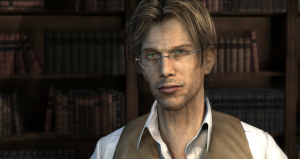
While Silent Hill 3 provides players with more insight into the violent nature of cyclical abuse, it’s not so much more that it really needed to be explored in the first place. The first game handled these ideas fine, and all that this sequel really does is set its sights on the fine button of hope that the first game offered and take it away from the player. It ends not on a ray of light, but in a dark vague shadow, implying that this horrid cycle can never really be stopped.
Gameplay, Music, and Visuals: Same Old
I know I’ve been saying this a lot in these sections, but there’s really not much to say here. The gameplay is the same type that we have seen in the previous two installments: it focuses more on running away from enemies than facing them head-on and trying to attack them. In between cutscenes there are puzzles of varying difficulty, and occasionally you will encounter a boss monster that requires a little more running and dodging than the normal enemies.
If it ain’t broke, don’t fix it.
The music, like the gameplay, is on par with the previous two entries into the series. Akira Yamaoka is, as always, a master of his craft, and I would go so far to say that the industrial, atmospheric scoring in this game is the creepiest of any Silent Hill title. By this point in the series, it is clear that Yamaoka understood exactly the kind of tone that the town was meant to have in its various stages. The foggy version of the town is meant to be melancholic and haunting, while the Otherworld is much more anxious and filled with clanging and crashing sounds. The title song, “You’re Not Here,” not only boasts Yamaoka’s expert acoustic guitar playing, but also features haunting, desperate vocals that can either be interpreted as Heather pining for her dead father, or Alessa longing for her other half.
Yamaoka-san has chops, kid.
Lastly, the visuals are a true testament to the graphical capability of the PS2. Both the cutscenes and gameplay are completely rendered, so the transitions between pre-written scenes and gameplay are seamless. There are no awkward transitions from beautiful CGI movies into wonky character designs like in the first game, and gone are the slightly plasticine-looking models from Silent Hill 2. The town itself also has much more character, and the Otherworld sections in particular look as grimy as they no doubt feel.
When it comes to visuals in the series, Silent Hill 3 sits at the top.
Impact on Gaming and Culture: A Definite Misstep
This series had so much goddamn potential that talking about this really bums me out.
All right, Dear Reader. I already waxed poetic about how much of a mistake this game was, but I pray you indulge me a little further. Silent Hill 3 was received fairly warmly by critics and players alike, but there was a common sentiment in many a review: that dragon, fatigue, was seen creeping on the horizon of this franchise. The game has a lot going for it—namely, that it is an interesting continuation of the exploration of abuse, and the visuals and music still hold up to this day. However, after dropping such an unbelievable story like Silent Hill 2 on us and then turning around and going back to the weird cult from the first game, it seemed as if Team Silent was showing their hand a bit too early in the series-making process.
I cannot imagine why, after the amazing success of the second game, which was so different from the first game in so many brilliant ways, Team Silent got cold feet, went backwards, and continued the story of Alessa. After Silent Hill 2, it seemed like the series was going to be an anthology series set in the town of Silent Hill, with traveler after lonely traveler finding their way to the town and undergoing their own spiritual torment until finally moving forward with their lives. But instead of doing that, they seemed like they were already out of ideas, and that was clear to the critics and players alike.
Silent Hill 3, though a good game in its own right, doomed the franchise into being solely about the Order, the Cult, and weird Satanic rituals. And while that can sustain one or two stories, to imply that that is the heart of your universe can only be interesting for so long before it gets repetitive. Silent Hill 4 tried to be different, but it came a little too late, and borrowed a bit too much from this game and ended up being the last nail in Team Silent’s coffin.
So no, Silent Hill 3 wasn’t the end of quality Silent Hill games. It was the end of the series’ creativity.
BONUS LEVEL: A Line So Great, I Put it in the Undertale Article
Remember how I said that Vincent has one line that completely changes the entire way you view the series as a whole?
Well, here it is.
Towards the end of the game, Heather finds herself in a library after dealing with a particularly nasty enemy. As she is collecting herself, she hears footsteps from behind her, and out strolls Vincent Smith from behind a bookshelf, his nose deep in some old, musty tome. He acts surprised, as if he weren’t completely expecting to see Heather here, and strikes up a conversation with her.
“Hiya, Heather,” he says, cheerfully. Heather groans.
“You show up everywhere, don’t you?” He smiles thinly.
The two share a bit of dialogue, with Heather asking just who he is, anyway; after he drops some hints as to who he might be, Heather hazards a guess that he’s on Claudia’s side. He turns his nose up at this somewhat, claiming that, although they believe in the same god, he detests being lumped into the same group as that detestable woman. In fact, he says, he wants her dead just as much as Heather does. Heather balks at this, and throws it back in his face, telling him what a horrible person he is.
And it is after this exchange that Vincent completely changes his demeanor from playful to deadly serious. The ambient music cuts out, and, as he turns to Heather to put her in her place, he delivers these lines:
“Don’t stand there looking so smug. You’re the worst person in this room,” He takes a step forward, and his calm cadence fades away as he starts tripping over his own words in anger. “You come here and enjoy spilling their blood, and… listening to them… cry out! You feel excited when you step on them and snuff out their lives!”
Heather looks taken aback, and, meekly, she asks him, “Are you talking about the monsters?”
A look of confusion crosses Vincent’s face for a moment. “Monsters?” He repeats, a smile widening on his face as the realization dawns on him.
“They looked like monsters to you?”
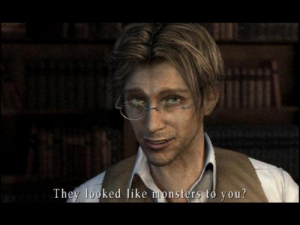
Heather steps back, completely disgusted. A look crosses her face, as if she is just now understanding that every monster she fought, every gross creature she stepped on, might not have actually been what she thought they were. They might not have been monsters at all.
They might have been people.
But then, Vincent laughs and pushes his glasses against the bridge of his nose.
“Don’t worry,” he says, back to his sardonic tone of voice.
“It was only a joke.”
In one fell swoop, the player is forced to think back on everything she has done over the course of not only this game, but also the games that came before it. Were the monsters you killed not actually as vile and disgusting as they appeared to be? Were they actually normal people, perhaps even unsuspecting denizens of the town whom you carelessly slaughtered? After all, you remember, the town plays tricks on your mind, making what you see entirely different than what other people see.
In fact, we know from Angela back in Silent Hill 2 that the town to her looked as if it were always on fire
And didn’t Eddie say that all those lying figures he had shot had been laughing at him? Teasing him? But those lying figures had no mouths… How cold they speak?
And, speaking of which, didn’t you see one of those things dressed in a suit with a note in its hand? What the hell would one of those creatures be wearing a suit for?
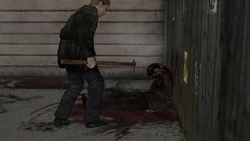
And wait—we, the player, thought James Sunderland was a good man, up until it was revealed to us that he actually murdered his wife. If he’s an unreliable narrator, than who’s to say we can really trust what we’re seeing when playing the games? We know that we’re playing as unscrupulous people—after all, Heather is out for revenge, and James murdered his wife—but then, what about Harry….
No: Harry was a good man. He was just out to protect his daughter. But… but if the town makes us see different things, and we can’t quite know who our characters really are until the end… and he was murdered… was he a good man, after all?
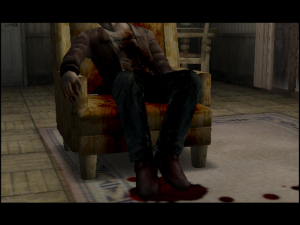
I’m not saying I have the answers, but it does seem that this one line of Vincent’s throws everything we have done in the games up to that point into question. Perception, as we have learned time and time again, is relative, so isn’t it possible that we have been forced to play as horrible people without realizing it? Isn’t it possible that, maybe, by playing these games and returning to Silent Hill… there’s something in us that needs addressing? That we’re the monsters?
Don’t worry. It was only a joke.
VERDICT: If Only This Had Been Number Four
Despite the interesting continuation of the themes from the first game, the beautiful visuals, the wonderful music, and that mind-blowing line from Vincent that makes me want to rethink my entire gaming career, I cannot in good conscience allow this game into the Canon. It has a lot to offer, but unfortunately it came out too soon after the bombshell that was Silent Hill 2, with too samey a plot as the first one, for it to be as classic and important to video games as those first two installments.
So sorry, Silent Hill 3, but you just missed it.
